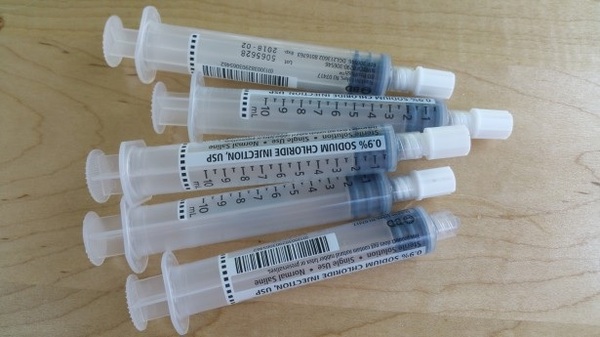
–>
July 15, 2023
How does a car, home electrical appliance, or computer manufacturer typically assure the safety of its products? Well, they typically engage in some form of self-regulation. Companies competing with each other are interested in the success of their products and want to make as much money as they can. If a company finds itself risking a loss of revenue as a result of a manufacturing error or lack of safety, it typically corrects or refrains from actions that are responsible for the loss of profits.
‘); googletag.cmd.push(function () { googletag.display(‘div-gpt-ad-1609268089992-0’); }); document.write(”); googletag.cmd.push(function() { googletag.pubads().addEventListener(‘slotRenderEnded’, function(event) { if (event.slot.getSlotElementId() == “div-hre-Americanthinker—New-3028”) { googletag.display(“div-hre-Americanthinker—New-3028”); } }); }); }
However, this may not be the case if profitable conduct contains no liability. Should this be the case, the easy route to attaining greater profitability will be taken. Indeed, such is the case in the world of vaccines, which proves to be the world’s exception to the rule.
Attorney Aaron Siri of the Informed Consent Action Network (ICAN) who has worked a great deal on vaccine-related issues like vaccine injury claims, vaccine exemptions and vaccine policy work, gave testimony to the Arizona State Senate on May 25th. His impressive two-hour presentation sought to answer the question: How can this system that people rely on fail us so badly? But to understand the failure is to understand the context within which the new vaccines arose. We need to understand what happened 37 years ago.
In 1986, Congress passed the National Childhood Vaccine Injury Act (HR5546). This is an historic act because it removed liability for childhood injury vaccines. Removing liability tends to alter the behavior of entities that benefit. Indeed, it turned out that pharmaceutical companies were no longer liable for injuries caused by their products. That has been the law since 1986.
‘); googletag.cmd.push(function () { googletag.display(‘div-gpt-ad-1609270365559-0’); }); document.write(”); googletag.cmd.push(function() { googletag.pubads().addEventListener(‘slotRenderEnded’, function(event) { if (event.slot.getSlotElementId() == “div-hre-Americanthinker—New-3035”) { googletag.display(“div-hre-Americanthinker—New-3035”); } }); }); }
Attorney Siri says that he knows of no other product that has that kind of immunity. Not planes nor drugs. But since 1986, big pharma has not had any market force check of any significance. “Think of all the products out there that warrant safety precautions, and the one you give immunity to is the one you give to babies. Think about that.”
It turned out that in the years leading up to Congress’ 1986 Act, the amount of liability that pharmaceutical companies were facing from injuries far exceeded the revenue that those products accumulated. Manufacturers went bust or withdrew from the market. You would think that the typical and responsible action would be to simply make a safer product for any remaining pharmaceutical company. That’s how market forces work. However, Congress decided that they did not have to make a safer product. Instead, they could continue to sell harmful products and would be granted immunity to boot, thereby evading a lawsuit from anyone. Equally as awful, they made this law for any vaccine made for children from that day forward.
Subsequent to Congress’ ruling, drug companies now lacked the incentive to understand the safety profile for their vaccines before they were licensed. When it comes to other medical drugs, drug companies are very interested in knowing the safety profile because they are not immune in these cases. In the event of injury, they may very well have to pay for damages. But with vaccine clinical trials, there is no concern. Since the Vaccine Injury Act, Congress created the economic basis for this attitude. Pharmaceutical companies can make their money while taking the path of least resistance. And that path corresponded with the loosening of practices connected to clinical trials.
Siri explains that after a vaccine or drug is put on the market and licensed, to conduct a placebo-controlled trial would be considered unethical since it would be withholding a licensed product from a child. But without a placebo-controlled trial, we are told, one cannot establish causation between the injury and the product.
 There are more complications. Pharmaceutical companies are required by law to summarize the clinical trial experience in the accompanying insert of the drug. Siri gives the example of Hepatitis B vaccine which is given to a one-day old child. For a human being as vulnerable as a one-day old baby you would expect the trial experience to have undergone several years. But in the above case, “In 3 clinical studies, 434 doses of RECOMBVAX HGA 5 mcg, were administered to 147 healthy infants and children (up to 10 years of age) who were monitored for 5 days after each dose.”
There are more complications. Pharmaceutical companies are required by law to summarize the clinical trial experience in the accompanying insert of the drug. Siri gives the example of Hepatitis B vaccine which is given to a one-day old child. For a human being as vulnerable as a one-day old baby you would expect the trial experience to have undergone several years. But in the above case, “In 3 clinical studies, 434 doses of RECOMBVAX HGA 5 mcg, were administered to 147 healthy infants and children (up to 10 years of age) who were monitored for 5 days after each dose.”
Such a test is not considered a rigorous one, yet the FDA licensed the product anyway after only five days of monitoring. (See FDA PDF section 6.1 for the known list of adverse reactions)
‘); googletag.cmd.push(function () { googletag.display(‘div-gpt-ad-1609268078422-0’); }); document.write(”); googletag.cmd.push(function() { googletag.pubads().addEventListener(‘slotRenderEnded’, function(event) { if (event.slot.getSlotElementId() == “div-hre-Americanthinker—New-3027”) { googletag.display(“div-hre-Americanthinker—New-3027”); } }); }); } if (publir_show_ads) { document.write(“
Enter Dr. Stanley Plotkin, who is the inventor of six vaccines and widely considered the godfather of modern vaccinology. Aaron Siri asked him a few questions while Plotkin was holding the insert to the Recombinant Hepatitis B vaccine.
Siri: Is five days long enough to detect an autoimmune issue that arises after five days?
Dr. Plotkin: No
Siri: Is it long enough to detect any neurological disorder after five days?
Dr. Plotkin: No.
Siri: There was no control group, correct?
Dr. Plotkin: It does not mention any control group. No.
Siri: Are there reports of adverse reactions …arthritis, autoimmune diseases like systemic lupus, Multiple Sclerosis, Guillain Barre Syndrome, Myelitis, Seizure, Bell’s Palsy, Muscle Seizure, Encephalitis, (etc.)
Dr. Plotkin: Correct
Dr. Plotkin also agreed that there was no randomized placebo-controlled study for this vaccine before licensing.
So, a top-of-the-line vaccinologist is obviously well aware of the adverse events before the distribution of vaccines. But so are regulatory agencies like the CDC. In fact, the CDC revealed in a May 2021 report that it was aware that Myocarditis and Pericarditis were adverse events associated with the COVID-19 mRNA vaccines. But it turns out that the CDC as well as the FDA were aware of these safety signals as early as Feb. 19! The data was hidden from the public until after the FDA granted Emergency Use Authorization.
Here is another exchange between Siri and Plotkin on the subject of the causality of the Dtap vaccine and autism.
Siri: This is an excerpt from the IOM (Institute of Medicine) report. Can you read the causality conclusion with regard to whether Dtap or Tdap cause autism?
Plotkin reads: The evidence is inadequate to accept or reject a causal relationship between diphtheria toxoid, tetanus toxoid or acellular pertussis containing vaccine in autism.
Siri: If you don’t know whether Dtap or Tdap cause autism, shouldn’t you wait until you do know — until you have the science to support it — to then say that vaccines do not cause autism?
Plotkin: Do I wait? No, I do not wait, because I have to take into account the health of the child.
Siri: And, so, for that reason you’re okay with telling the parent that Dtap or Tdap do not cause autism even though the science isn’t there yet to support that claim?
Plotkin: Absolutely.
In Siri’s presentation there is also a wealth of material covered on the subject of promotion and safety, including a very revealing deposition by Dr. Kathryn Edwards, a leading vaccinologist who served on a Data Safety Monitoring Board for Pfizer. While industries like transportation and energy have separate departments for promotion and safety, the Department of Health and Human Services is responsible for both. And the deep conflict of interest is evident in this presentation.
Congress’ Injury Act of 1986 certainly negatively changed a lot of things for people, but the combative drive of people like the attorneys of ICAN and the data-driven and daring Steve Kirsch and RFK among others, are making headway to affect change, awareness and bring humanity and accountability to the world of vaccines. As we approach the next presidential election, when health emergencies of various kinds can intrude into our lives, we can use all the help we can get.
Image: Public Domain Pictures
<!–
–>
<!– if(page_width_onload <= 479) { document.write("
“); googletag.cmd.push(function() { googletag.display(‘div-gpt-ad-1345489840937-4’); }); } –> If you experience technical problems, please write to [email protected]
FOLLOW US ON
<!–
–>
<!– _qoptions={ qacct:”p-9bKF-NgTuSFM6″ }; ![]() –> <!—-> <!– var addthis_share = { email_template: “new_template” } –>
–> <!—-> <!– var addthis_share = { email_template: “new_template” } –>





